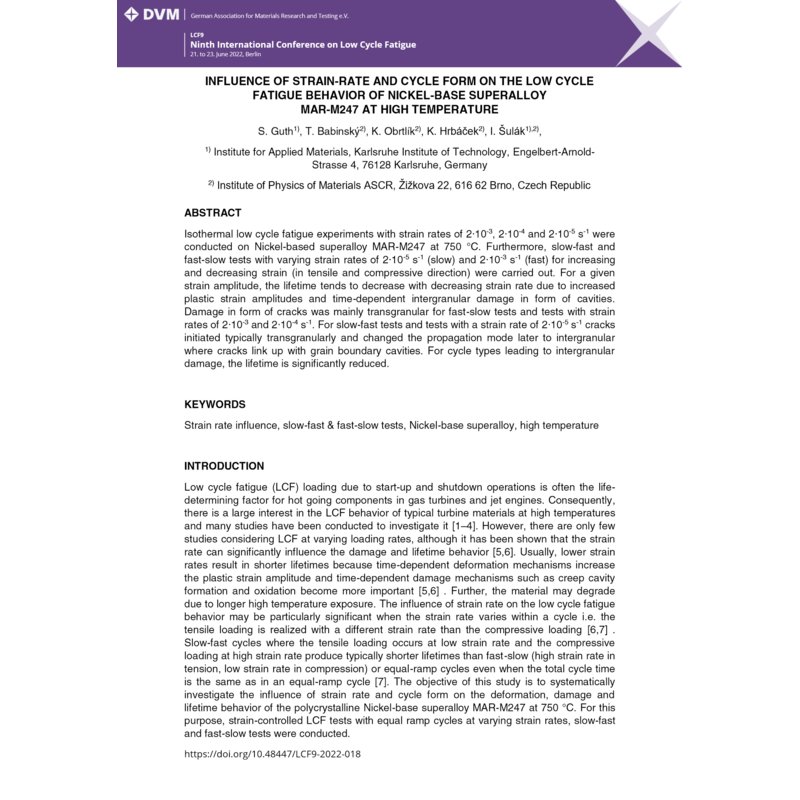- Online only



We conducted isothermal low cycle fatigue experiments with strain rates varying by three orders of magnitude at elevated temperatures between 750 and 900 °C on Nickel-based superalloy MAR-M247. Further, slow-fast and fast-slow tests with varying strain rates for increasing and decreasing strain (in tensile and compressive direction) were conducted. All tests ran under strain control and fully reversed cycle on solid round specimens in laboratory air. The cyclic deformation, damage and lifetime behavior dependent on strain rate and cycle form were investigated. SEM and light microscopy were used to characterize the damage evolution on longitudinal sections. Results show that higher strain rates induce higher stress amplitudes for a given strain amplitude and temperature. However, the…

Datenschutzbedingungen (bearbeiten im Modul "Kundenvorteile")

Lieferbedingungen (bearbeiten im Modul "Kundenvorteile")

Rücksendebedingungen (bearbeiten im Modul "Kundenvorteile")
We conducted isothermal low cycle fatigue experiments with strain rates varying by three orders of magnitude at elevated temperatures between 750 and 900 °C on Nickel-based superalloy MAR-M247. Further, slow-fast and fast-slow tests with varying strain rates for increasing and decreasing strain (in tensile and compressive direction) were conducted. All tests ran under strain control and fully reversed cycle on solid round specimens in laboratory air. The cyclic deformation, damage and lifetime behavior dependent on strain rate and cycle form were investigated. SEM and light microscopy were used to characterize the damage evolution on longitudinal sections. Results show that higher strain rates induce higher stress amplitudes for a given strain amplitude and temperature. However, the lifetime decreases with decreasing strain rate. Thus, the increased negative influence of time dependent creep and oxidation mechanisms for low strain rates apparently outweighs the damaging effect of higher stress amplitudes for high strain rates. For a given strain amplitude, the lifetime of slow-fast tests (low strain rate for increasing strain, high strain rate for decreasing strain) is lower than that for fast-slow tests, although the mean stress is compressive in slow-fast tests and tensile in fast-slow tests. The lifetime for slow-fast tests is also lower than the lifetime for constant strain rate tests cycled with the low strain rate of the slow-fast tests. Damage investigations indicate that slow-fast tests lead to a higher amount of creep damage in form of grain boundary cracks and pores. Differences in the fatigue behaviour of MAR-M247 superalloy cyclically strained in different strain rate regimes at high temperatures are discussed based on microstructural observations and explanations are proposed.